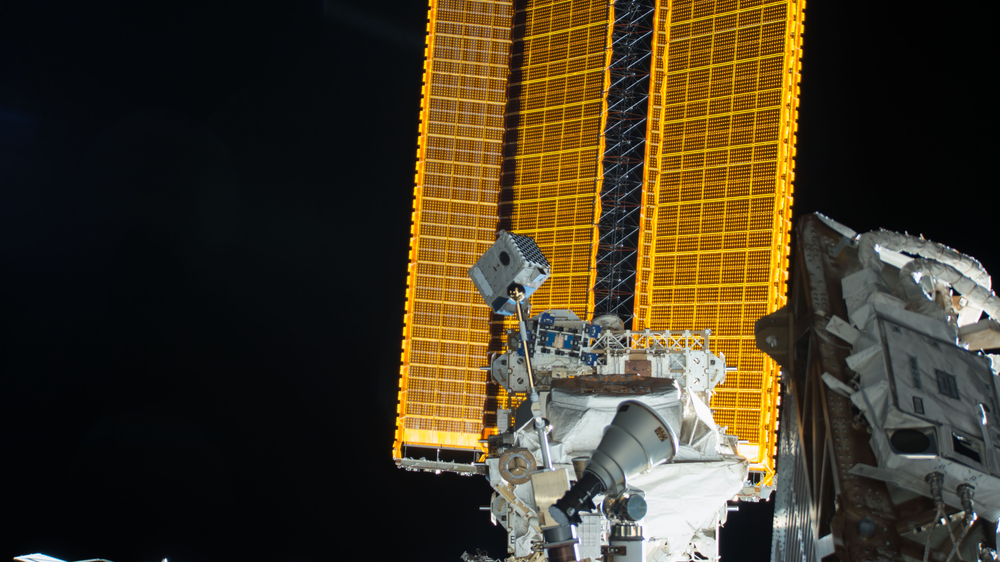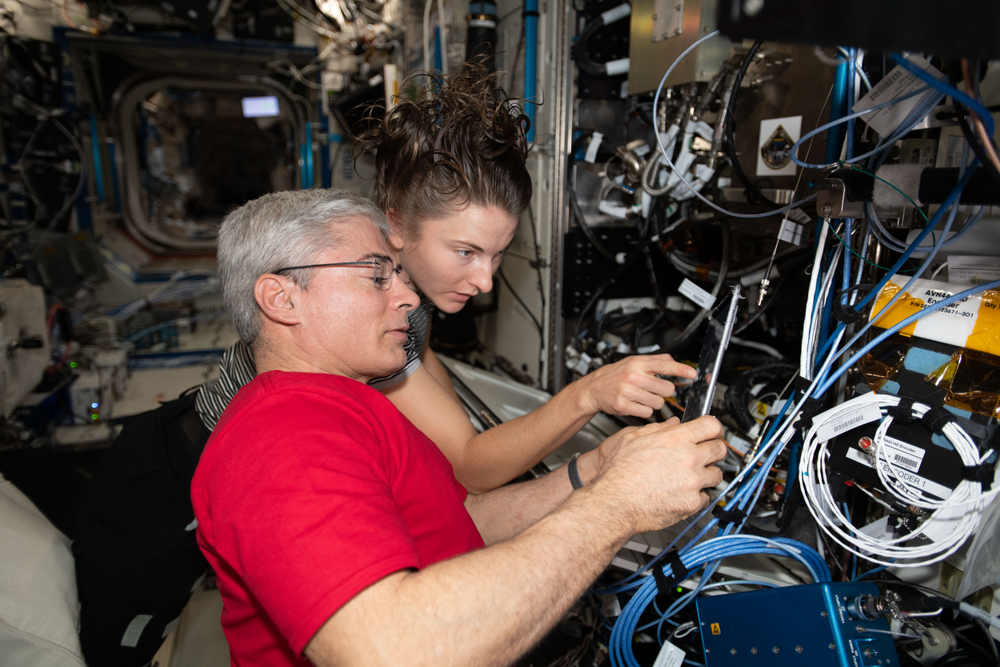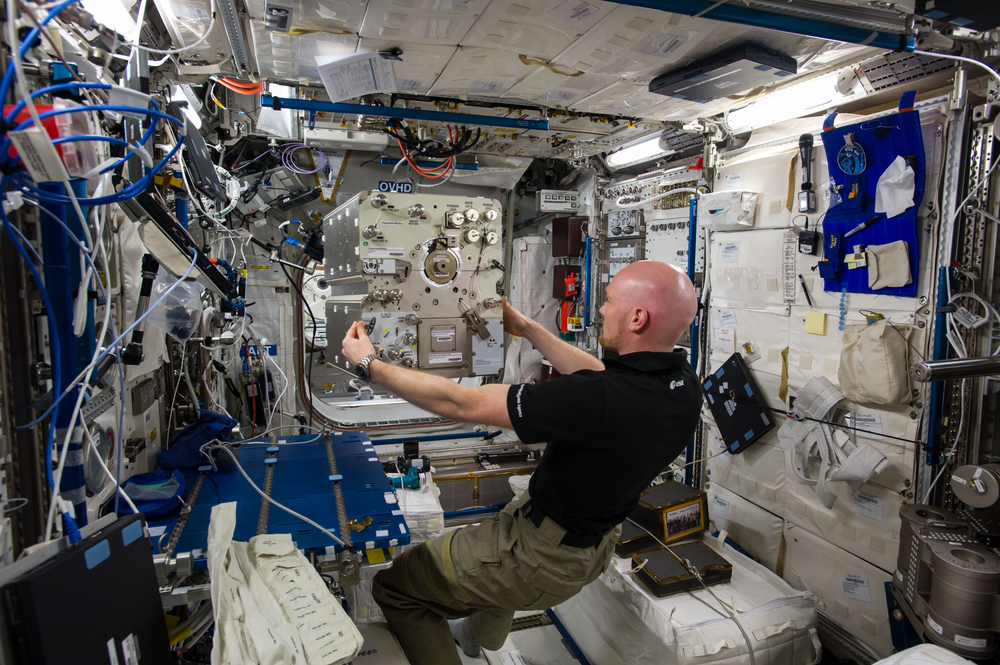Station Science Top News: March 22, 2024
Researchers detected two glitches, or changes in rotation, on either side of a fast radio burst (FRB) from magnetar SGR 1935+2154. Observations suggest that the first glitch, probably triggered internally, spawned a brief but strong wind in the star’s magnetic field that created conditions to produce the FRB. These observations provide insight into the characteristics of magnetars and conditions needed to produce FRBs.
A series of observations from NASA’s Neutron Star Interior Composition ExploreR (NICER) and NuSTAR detected these events. Magnetars are neutron stars with extremely high magnetic fields. These observations provide more evidence for a long-suspected association between some FRBs and magnetars, first confirmed by an FRB from this star in 2020. Comparing the 2020 and 2022 events highlights the quality of information provided by the high frequency of observations possible with NICER.

View of the Neutron Star Interior Composition ExploreR (NICER) payload, attached to ExPRESS (Expedite the Processing of Experiments to Space Station) Logistics Carrier-2 (ELC-2) on the Starboard truss segment. Photo was taken by the ground-controlled External High Definition Camera 1 (EHDC1).
***
An artificial neural network (ANN) tool delivered consistently accurate predictions for heat transfer in a two-phase thermal management system that dissipates heat using boiling. These results demonstrate the potential of this tool to enhance the understanding of thermal management systems in microgravity and on Earth.
Two-phase cooling systems transfer heat from a surface by using the heat to boil a liquid and generate vapor (bubbles) that move heat by convection, then changing the vapor back to a liquid via condensation. The Flow Boiling and Condensation Experiment (FBCE) investigation explored these systems, which have significant potential for providing thermal management on future space missions. This study used data from the experiment to develop and train the ANN as a predictive tool for use in the design and analysis of thermal systems. ANNs are an artificial intelligence made of computational units similar to neurons in the nervous systems of living things.

***
The Electromagnetic Levitator (EML) facility enabled accurate measurement of density, viscosity, and surface tension of an aluminum-copper alloy. These results support the creation of a reliable database on the properties of pure metals and alloys and contribute to lead-free soldering and automotive industry applications.
The ESA (European Space Agency) EML Batch 3 - NEQUISOL experiment investigated the microstructure and growth velocity of aluminum-iron (Al-Fe) and silicon-germanium (Si-Ge) samples processed in the EML. The EML is designed for container-less processing, also known as the oscillating drop method. This keeps samples pristine and produces better measurements because containers can contaminate the materials they hold.








